Instructor blues: my first (and last?) season teaching skiing
A candid look back at my struggles on the slopes
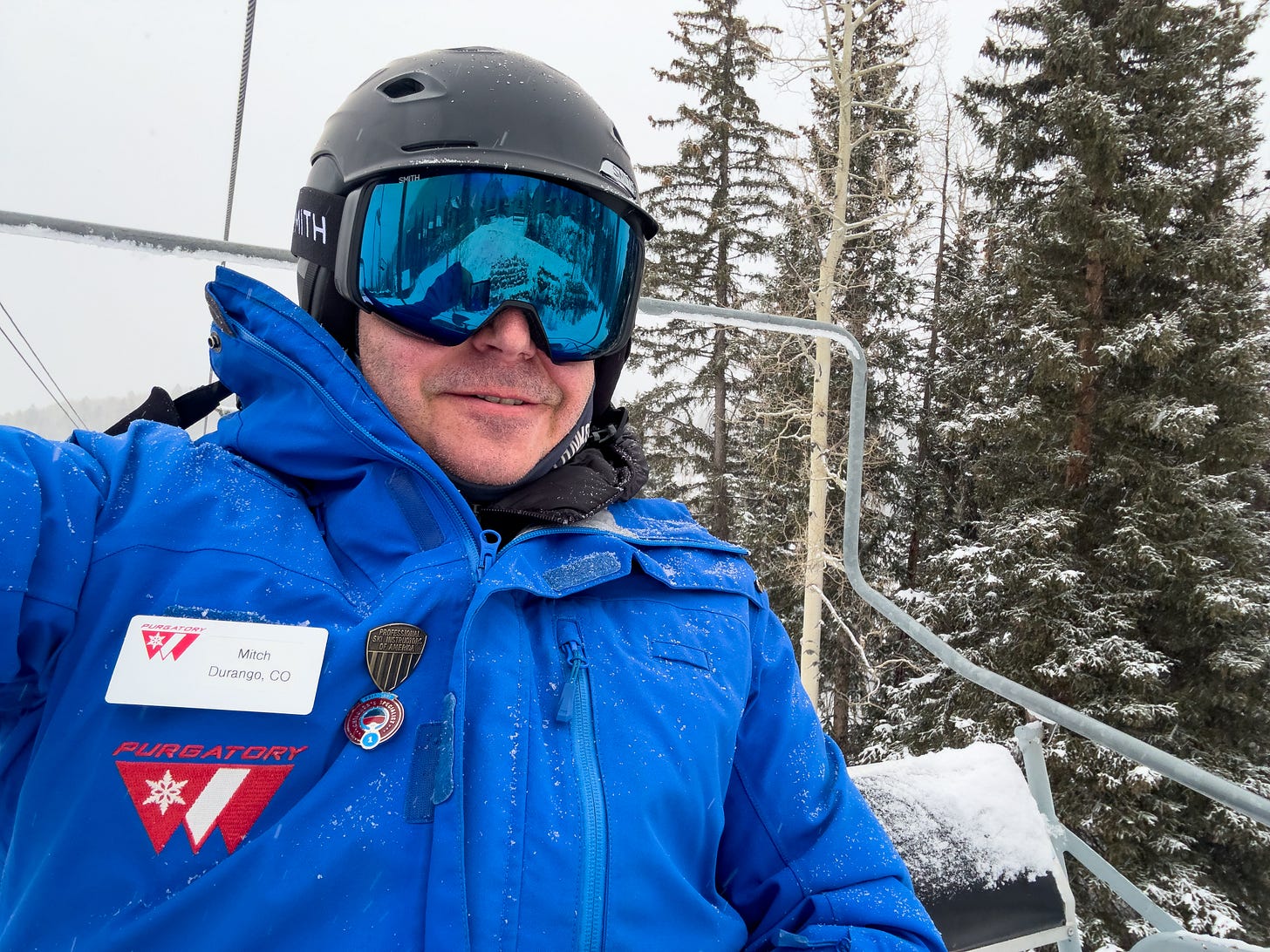
Hello, my name is Mitch, and I’m a recovering ski instructor.
This past winter, I taught alpine skiing for the first time, but I’m doubtful I’ll do it again.
I went in with reasonable expectations and a positive attitude, but by the middle of the season, I was counting the days until my part-time job at Purgatory was done.
It wasn’t because I was only making $16.50 an hour, slightly above Colorado’s minimum wage, and less than I could have earned flipping burgers down in Durango.
It wasn’t that I felt exploited by my employer or by my supervisors. Everyone I worked with was courteous and professional in a job that I willingly accepted at the prevailing market wage.
It was largely because I did so little actual skiing while working as a ski instructor, and because I spent so much time on the bunny hill and magic carpet.
Maybe things would have been better in a season with more snow.
Maybe I would have been more gratified teaching people other than newbies who had trouble just standing up on skis, let alone sliding downhill on the planks.
Maybe I would have enjoyed the work more if I were at Telluride, Aspen, Vail, or another magnet for the ultra-wealthy, where some clients think nothing of tipping a Benjamin.
In reality, I wound up teaching at one of the worst snow years on record at Purgatory, a resort that bills itself as a budget alternative to the usurious prices charged at bigger resorts.
Tips were rare, so like many people who work in the service sector in tourist destinations, I often felt underappreciated by the clientele while performing a demanding job.
Ultimately, I succeeded since I didn’t lose any of the kids I was instructing, nor did I watch any of my students get seriously injured.
But there were so many close calls that it wound up being one of the more stressful jobs of my life.
High hopes meet reality
My journey to becoming a ski instructor began in 2017, when I earned Alpine Level I and Children’s Specialist certifications through a 10-day academy offered by the Professional Ski Instructors of America at Breckenridge and Copper Mountain.
At the time, I was living in Denver and working for myself, but even with the certifications and flexible schedule, I could never figure out how to make an instructing job work, given that I was so far from the resorts. The hellish commute on I-70 would eat up most of my wages.
Still, I was excited to go through the training so I could teach my daughter to ski properly, and because I’d occasionally found myself in the role of unofficial ski instructor when friends and family came to town.
To work at Purgatory, I didn’t need the certifications, but they wound up earning me an extra $1.50 per hour! I was hopeful that the little PSIA pins I wore on my jacket would give me a better shot at private lessons and classes with more advanced skiers. Alas, I was a first-year instructor and at the bottom of the alpine totem pole, so I repeatedly got stuck with the “never-evers” who were skiing virgins.
Teaching Texans
Like other resorts, Purgatory faces a crush of visitors during winter break, spring break, and holiday weekends, so I was required to work many days during these peak periods. If you’ve ever been to Purg, you know that during those windows it’s extremely popular with people from Texas, many of whom drive huge distances to get a taste of the snow.
During the morning lineup, you could see trouble coming from a mile away. Out of breath from the altitude and exhausted from the drive (it’s about 14 hours and 900 miles from Dallas to Purg), they’d shuffle up while struggling to cradle their rental skis in their arms. Some looked like they were ready to collapse before the lesson began.
My first job with never-evers was to introduce them to the gear and make sure they were ready to ski. Virtually everyone’s boots were too loosely fastened, so I’d spend the beginning of lessons on my hands and knees in the snow, frantically buckling footwear for a class that sometimes exceeded 10 people.
Another early task was getting the students to try on one ski and use their free leg to push off, first in a straight line, then in a circle. Easy enough for me to demonstrate, but there were plenty of wipeouts. Then we’d get on both skis and try riding out the most gradual of declines, but once again, there was carnage as my students fell forward, fell backward, fell to the right, fell to the left.
During that first hour on the bunny hill, the class size and composition were often fluid, with supervisors switching students among instructors in a desperate but often futile bid to group like abilities together. It was a persistent problem for me all season: with a class of varied abilities, I always struggled to find the sweet spot between boring the more advanced students and terrifying the less capable folks.
There were a few bright spots. I remember one lesson with a young woman from Texas who started out nervous about being on skis and looked like a newborn fawn struggling to stay upright on her shaky, crooked legs. But she was a dream student: she listened to my instructions, she adopted a positive attitude, she demonstrated grit when faced with adversity, and after a few hours, she was making sweet snowplow turns on a green run, thrilled with her progress.
But for each one of those success stories, there were many more cases of me failing and my students flailing. Every now and then, I got to scream, “Excellent—you’ve got it!” More often, I offered condolences: “Almost—try again!” became a mantra.
Clinical problems
In addition to teaching during peak times, I had a few recurring classes: an adult beginner’s clinic on Wednesday mornings and two back-to-back half-day sessions with kids on Sundays.
The adult clinic started out rough because one of my students was elderly and had knee issues, so he sometimes had to take off his skis and walk down the mountain, which felt like an ignominious defeat to both of us. Eventually, he was transferred out of the class, so I wound up teaching three middle-aged women. Their attendance was spotty, and their patience with the terrible conditions wore thin, just like the snow cover.
At one point in the season, there was so little snow on the lower reaches of the mountain that the bare ground was poking through in spots.
“How do I ski over that?” one student asked.
“You don’t!” I replied.
You know it’s a bad season when you’re yelling to students, “Steer clear of the dirt! Steer clear of the dirt!”
Even in a good snow year, Purgatory is a tough place to teach. The beginner’s area is separated from the rental shop and base area by a blue run, forcing some visitors to take a shuttle bus. Elsewhere on the mountain, known locally as Traversatory, the few green runs feature lots of flat sections where my students stalled out, interspersed with steep headwalls where they floundered.
In the end, I enjoyed teaching the adults more than the kids because they were easier to talk to on the chairlift. I also didn’t feel as responsible for their well-being, though I’d hold my breath every time they crashed, fearful they’d injured themselves.
One of my many frustrations was that I could easily identify a problem in my students’ skiing, but not necessarily fix it, no matter how many times I urged them to change their ways. In other jobs, I’ve often worked as an editor, giving me the license to add, delete, and modify to my heart’s content. However, it’s much easier to mark up a document than it is to make another human’s body move in a new way.
Parenting while instructing
Teaching kids on Sundays was occasionally gratifying, but mostly it was full of anxiety as I tried to simultaneously parent and instruct.
I was always petrified of losing a kid on the mountain, a situation known to Purg instructors as a “Bo Peep” that would have required me to sheepishly call my supervisor and deploy the ski patrol to launch a search for the missing child.
Luckily, my classes with kids—ages six to 10—never got larger than five students, but even then, it was a constant challenge to count the students and keep track of their movements on a crowded hill. One trick of the trade I picked up early was taking a photo of my kids at the start of class so I could describe their clothing to ski patrol if they disappeared. I also got much better at skiing backwards so I could keep tabs on my students.
I constantly worried about my kids getting hurt—a fear that was amplified after a seven-year-old ski school student in another class fell 35 feet off a chairlift and had to be airlifted to the hospital. I never learned the full story of what happened, beyond what I read in the Durango Herald, but it made me paranoid for the rest of the season anytime I was riding with kids, many of whom like to engage in the two cardinal sins of chairlift riding: horseplay and roughhousing!
On the slopes, I cringed when my students fell. A couple of times they cried. But mostly they were troopers.
The one episode I’ll never forget is watching two of my young students bomb down a slope with bravado, only to hit a mogul field in flat light, which caused them both to crash ferociously and separate from their gear in yard-sale falls. One of the kids hit the snow hard enough with his face that it cracked his goggles, making me worry about a traumatic brain injury. He shook it off, but I spent several anxious hours that evening waiting to hear back from his parents, who thankfully texted back the next morning to say that he was sore but fine.
Even break time in the ski lodge could turn into an adventure. In a nice gesture, Purg lets instructors get free hot chocolate for their kids at one of the restaurants. But on two occasions, my little ones knocked over their cups, causing steaming liquid to stream across the table and forcing me to mop it up frantically with a fistful of napkins. Another Sunday, one of my students spilled an entire cup of hot chocolate all over her ski jacket. Sorry, Mom!
My morning class of kids was easier to deal with since they were young enough to respect my authority, and some of them actually improved their skills during the eight-week clinic.
But my all-male afternoon class was a different story. The boys just wanted to straightline down the mountain and look for jumps, rather than learn from me how to make proper turns. At one point, I even had to threaten the nuclear option: “I’m going to tell your parents you’re not behaving!” I warned, which seemed to get their attention.
Silver linings
All told, I earned about $3,000 in wages and tips during the season, but there were some other nice perks: I got a free ski pass, as did my wife, and my daughter got to take her ski clinic at half price, all of which saved us close to $2,000. I also had the opportunity to ski at a bunch of other Colorado resorts for free.
One benefit I didn’t expect: I enjoyed wearing a uniform and being an official part of the Purg team, rather than just some paying customer. Tons of people would come up to me to ask questions—How do I get to the base village? What’s the best run to the bottom? Where’s the bathroom? What’s a good place for lunch?—and it felt good inside to be a helpful guide to one of my happy places.
Speaking of the jacket, at the end of the season, I left it on the floor at home, and my normally well-behaved dog decided to rip the pockets to shreds in order to get at some energy bars I had stored inside. However, Purg took the damaged garment back, no questions asked, which was generous of them.
Going into the season, I braced for being mistreated by my employer. I read Barbara Ehrenreich’s Nickel and Dimed, the author’s revealing account of working undercover at low-wage jobs. Sure, I would have loved to earn more money, but all in all, I felt like the business held up its end of the bargain.
I got a kick out of being a “professional skier.” For the first time in my life, I was actually earning money by engaging in my passion for skiing. Despite the lousy pay, it was gratifying to join the community of people who make a living on the snow. It reminded me of the huge pride I felt when my first journalism story was published in High Country News in 1998, another foray into an industry with meager wages.
This past season, I made fewer turns than expected, but I do think instructing makes you a better skier—and more appreciative of how difficult the sport can be for newcomers. For me, it’s similar to how editing makes one a better writer.
So I suppose it wasn’t a total loss. Becoming a ski instructor had been on my alpine bucket list for many years. But I’m glad I’ve crossed it off, probably for good.


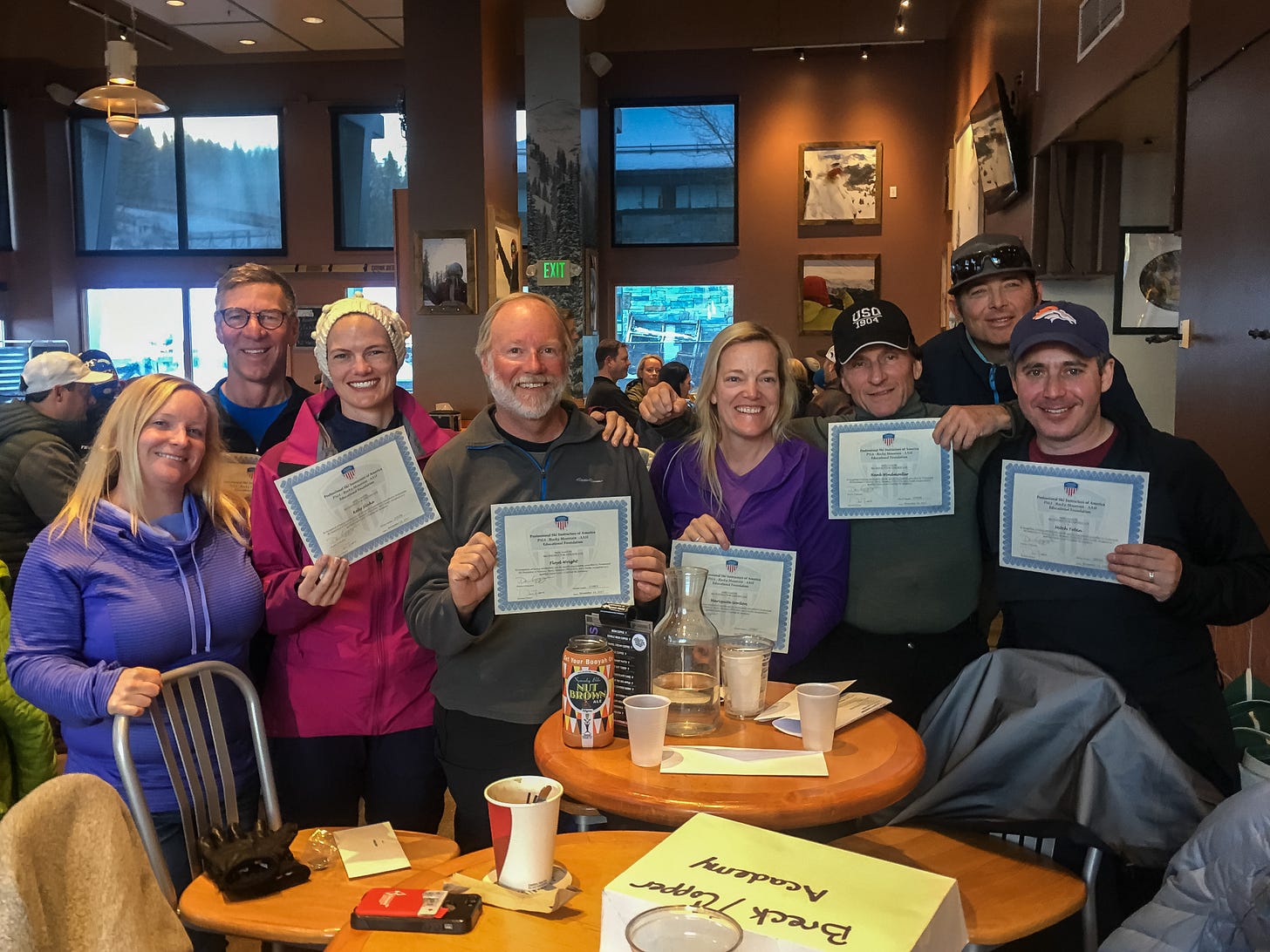
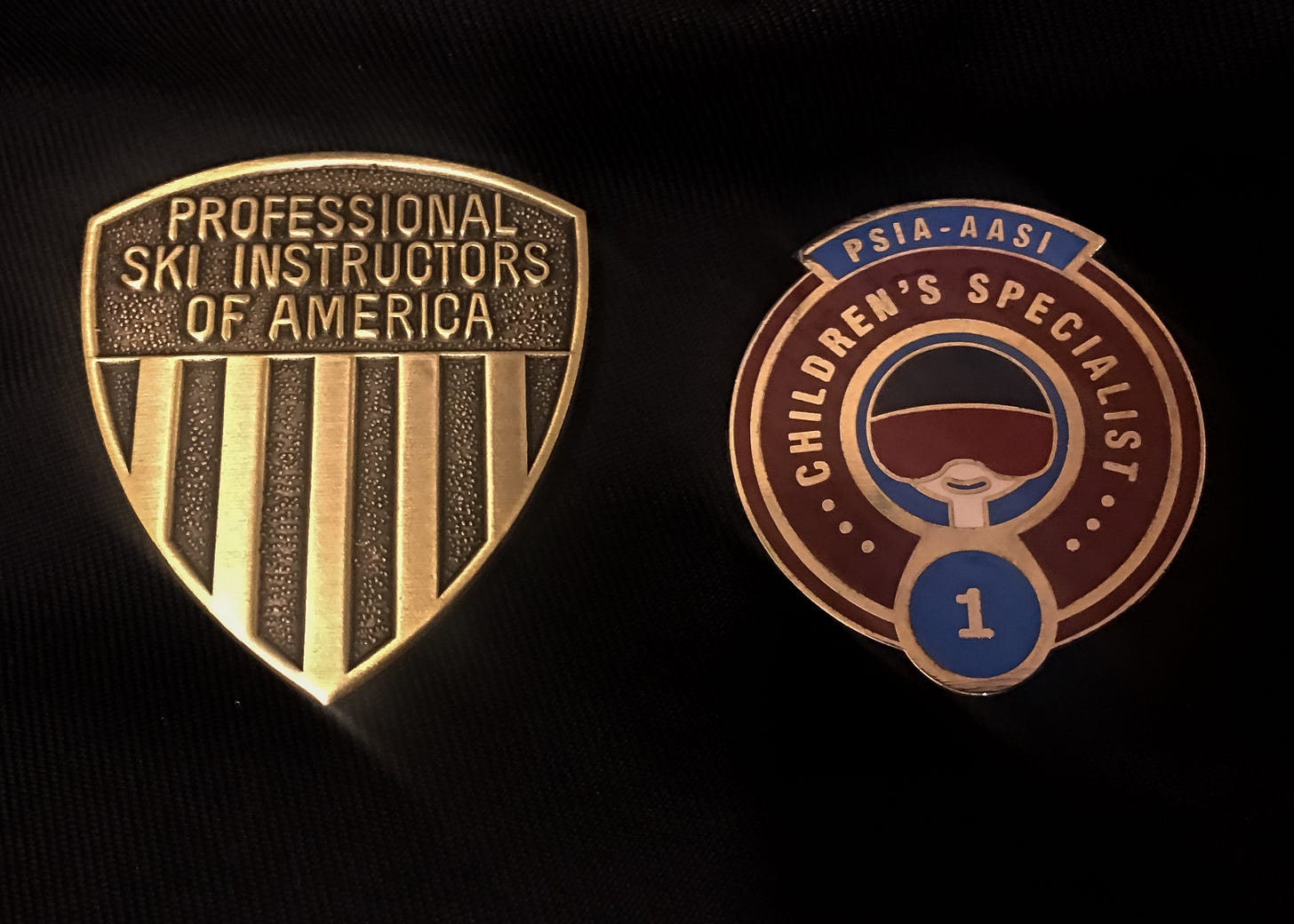
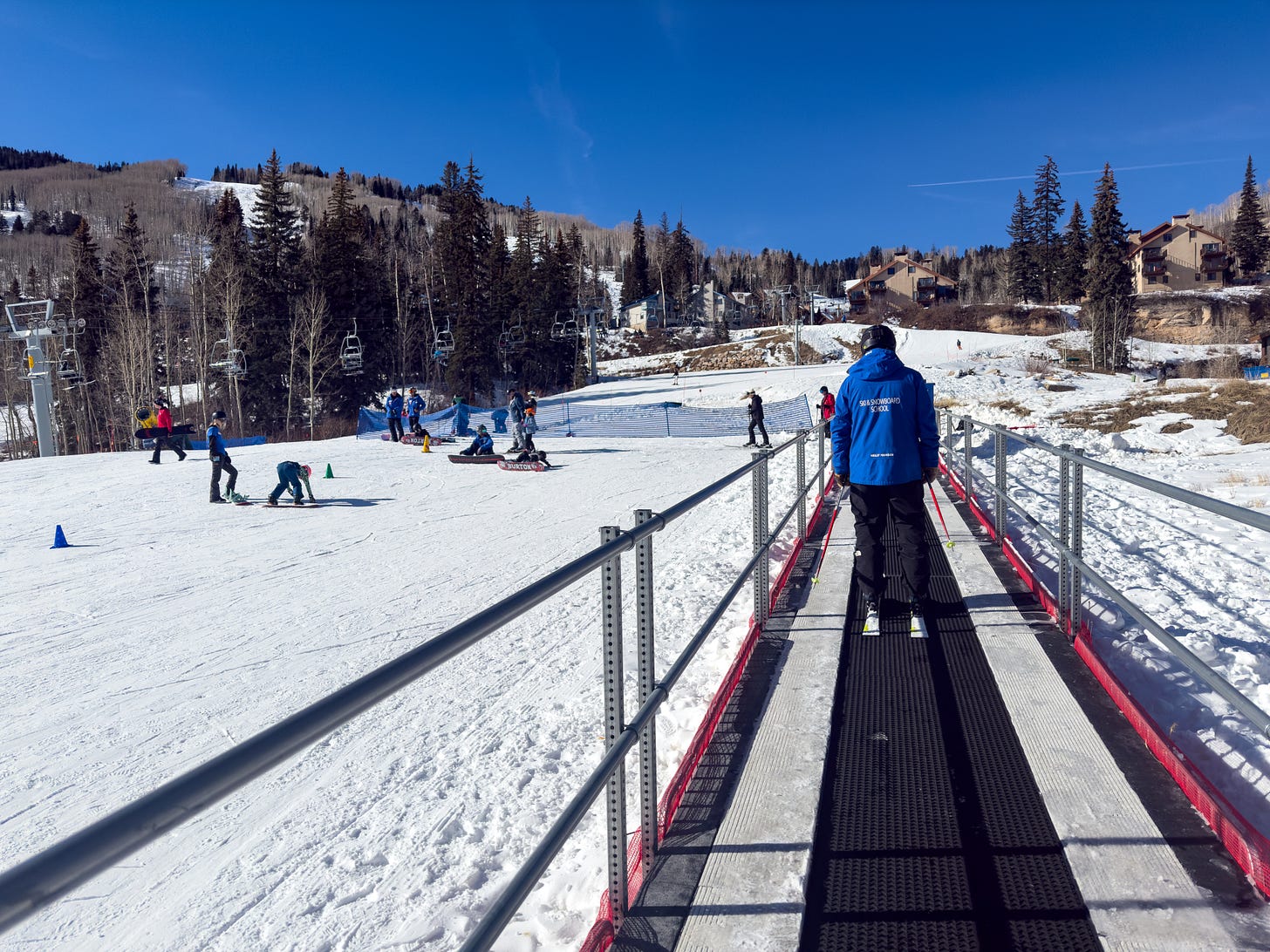
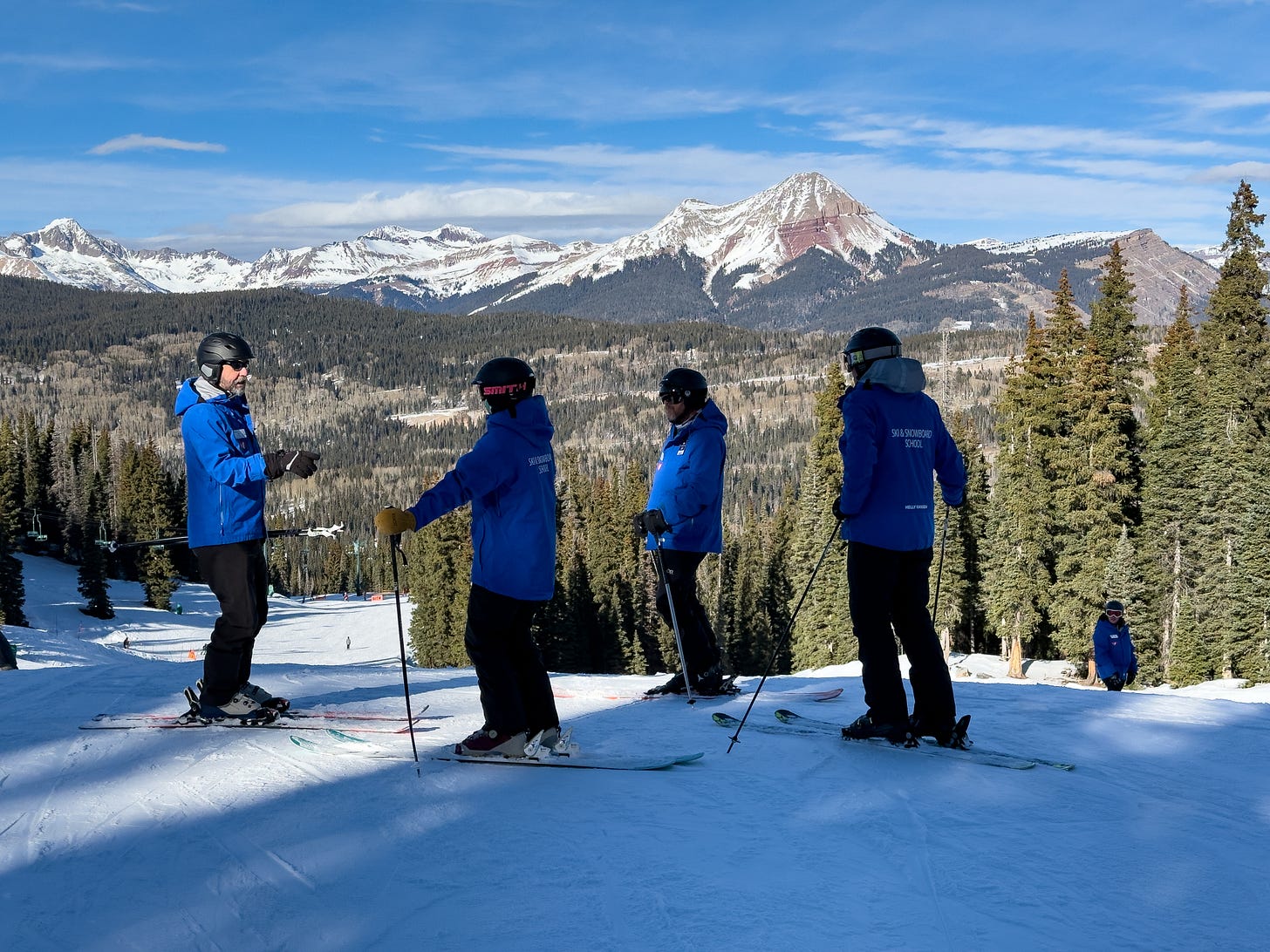
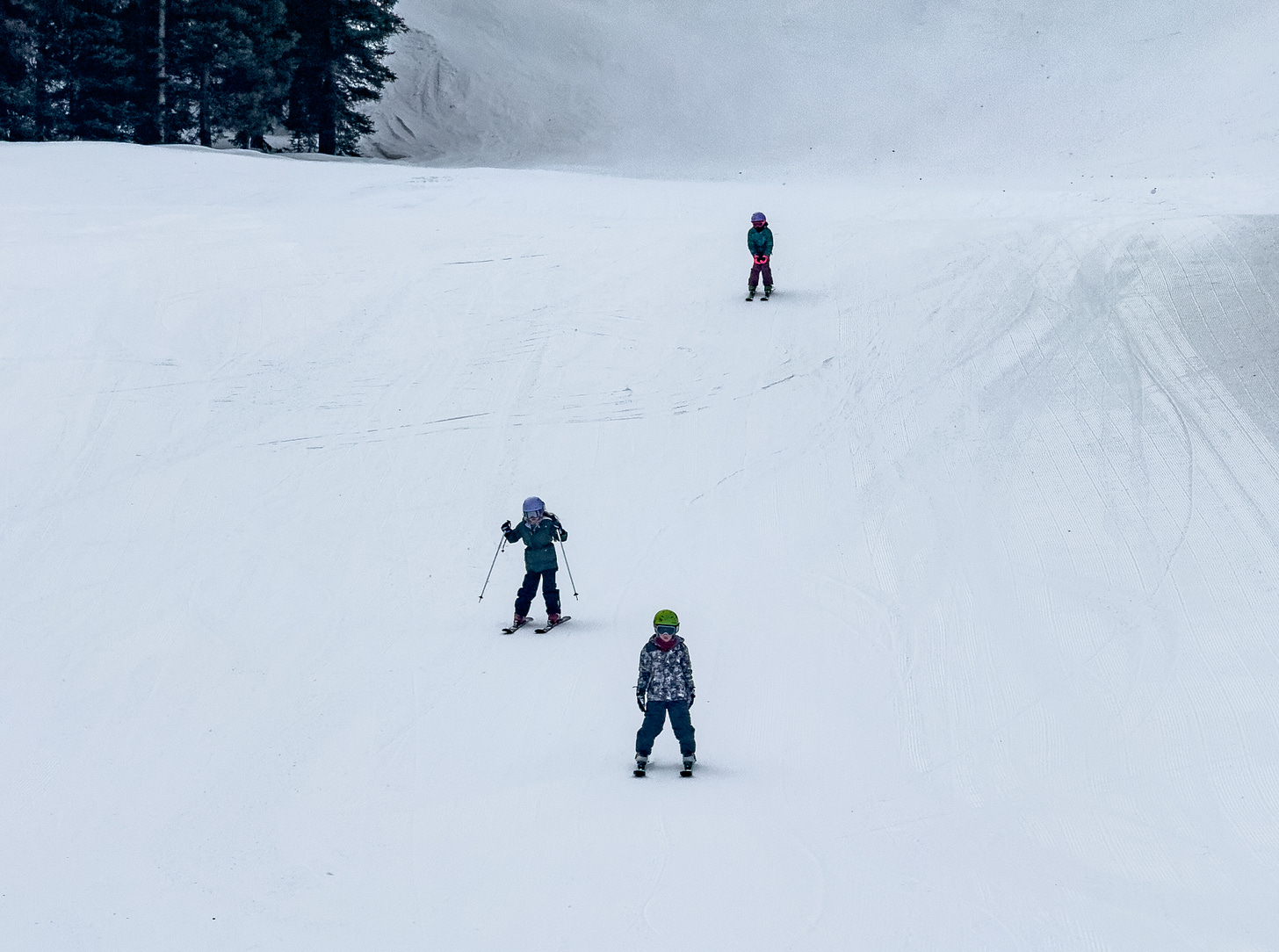
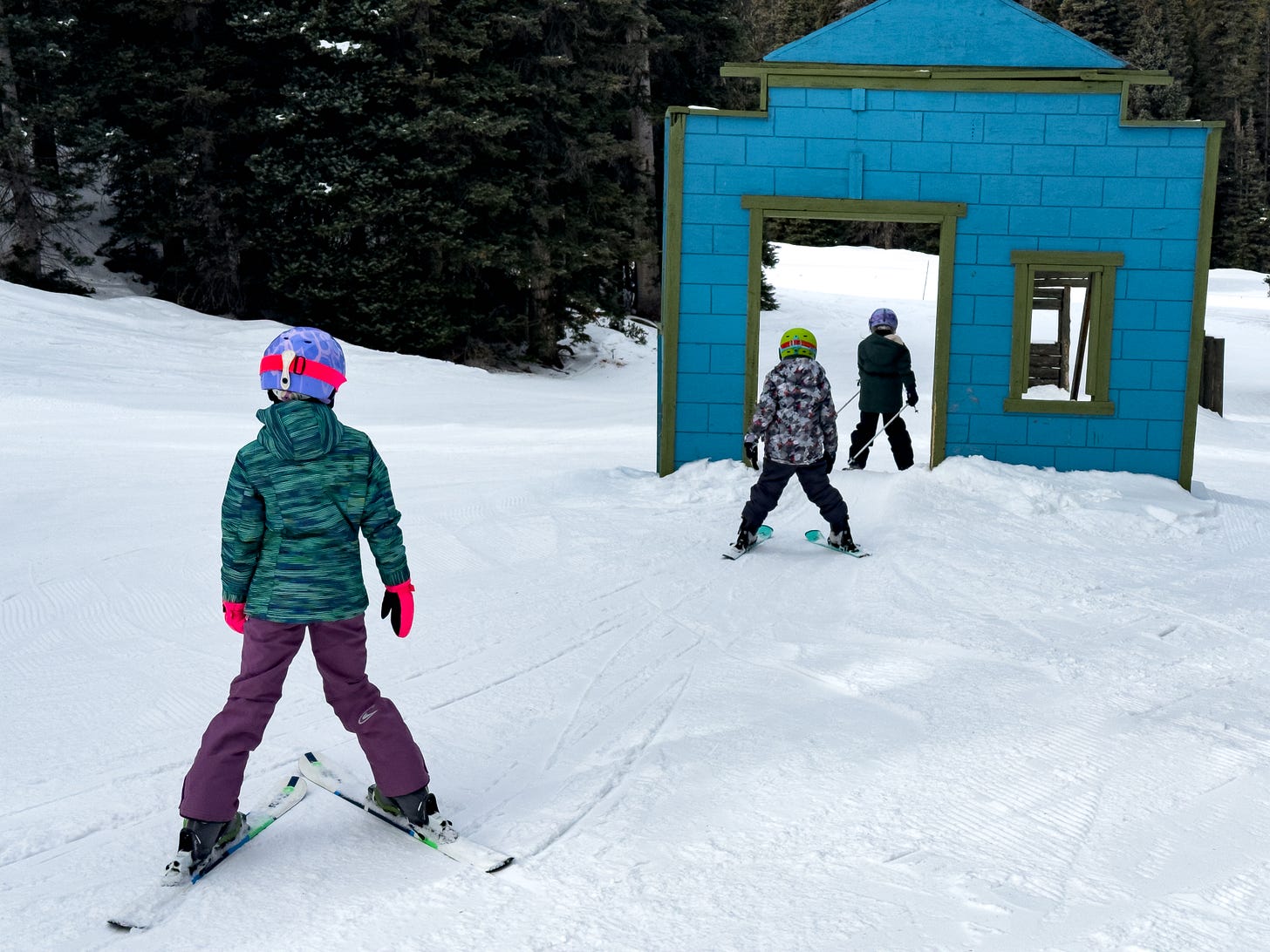
that's me on the mc and the beginner hill but i love it!!!! i love teaching the little ones at jfbb. i love giving them a great first impression of sking!!! at the end of the year my award basically said skier most time in the bowl!!!!